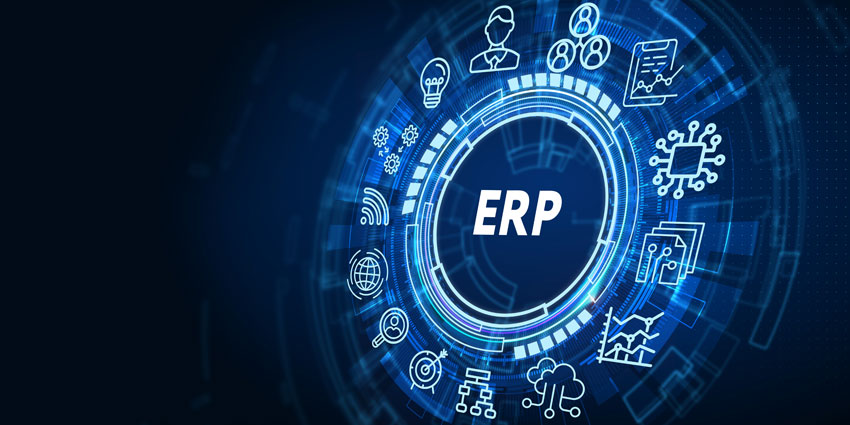ERP implementation methods
Implementing an Enterprise Resource Planning (ERP) System is often a sophisticated and costly project. Applying the right implementation method is key to ensuring the project runs smoothly, stays on schedule, and achieves business goals. Drawing from FPT IS’s experience of successfully implementing specialized ERP projects, this article introduces an ERP implementation roadmap that FPT IS has successfully employed with various organizations and businesses.
Your ERP implementation method is crucial in conducting analysis, building and improving the solution to operationalize your Enterprise Resource Planning (ERP) System.
Based on our practical experience and best practices in implementing ERP for both domestic and international businesses, we recommend the following ERP implementation procedure.
1. Project preparation
This includes defining the goals, scope, resources, and planning for the ERP implementation project.
- Select the implementation team and determine the role of each member
- Determine the implementation timeline
- Identify implementation steps and tasks to be completed during the process
- Identify implementation phases
- Identify deliverables for each implementation phase
- Complete and agree on the implementation plan (Master Plan) for the project team
Survey of current business status
Surveying the operating status of the company before implementing the ERP system is a mandatory step and a foundation for the next steps. During the survey, questions will be asked to collect key information from the company, including:
- Main business activities
- Number of employees
- Business model (single-company model or multi-company model)
- Organizational structure and operating procedures of departments
- Number of stores (for commercial enterprises), number of warehouses, delivery procedures, total number of product lines and existing products, product selling channels and methods (physical store/online store, payment methods)
- Production and management procedures
- Scale of future business expansion
- Current IT proficiency levels within the enterprise (employees’ computer proficiency levels)
- Existing business management systems implemented by the company. Previous experiences with ERP systems, including advantages and disadvantages during actual use, and reasons for discontinuing the use of previous systems.
- Evaluate the actual business situation of the company
- Identify current business procedures and pinpoint problems that need to be addressed
2. Build business procedures and unify system design documents (Blueprints)
This is a crucial phase of the project. After the survey, the solution provider will offer advice and solutions regarding technical aspects, production and business operations procedures, supply chain management procedures, accounting procedures, etc., to tackle the company’s business challenges. This phase involves cooperation, discussions and consensus on solutions, requiring a strong spirit of teamwork and unweaving commitment to support from management.
- Conduct regular workshops with the company to provide guidelines on available features of the ERP system and seek the company’s cooperation to standardize business procedures (future business procedures), ensuring flexibility and efficiency in each department’s operations.
- Determine functional requirements and design the ERP system based on standardized business procedures, providing solutions to meet the needs of operating the ERP system after implementation.
- Ensure integration with existing systems.
- Install the simulator and customize the ERP system according to the determined design to test and build solutions.
- Identify needs that will change when operating the system in the actual production and business of the company so that the company can promptly disseminate information about the changes and ask for all employees’ cooperation.
- Build the system and perform test operations for important cases that greatly affect the company’s production and business operations procedures (pilot environment).
3. Build the ERP system (Installation, training, and testing)
This is the stage of deploying and realizing the future business procedures of the company on the ERP system.
- Validate the design, adjust and modify the software
- Train the company’s employees to use the system
- Provide any necessary fixes and adjustments
- Conduct training regarding change management
- Prepare the necessary configurations and build the ERP system according to the agreed solution
- Create reports and integrate them (if any) into the ERP
- Create an authorization matrix
- Collect and clean Master data, and practice converting Master data into the SAP ERP system
- Conduct training for Key Users to prepare data for testing (UAT).
- Train Key Users to use the ERP system
- Key Users conduct UAT
- Perform change management and project communications
- Define the strategy for system transition solutions and Go-live
4. Preparation before Go-live – Final Preparation
This is the final stage of preparing a complete ERP system to serve the operation of the business according to future business procedures after putting the ERP system into use.
- Key-users conduct training for end-users
- Update and complete the production system to prepare for Go-live
- Perform final standardization of the master data to convert it into the system for production operation
- Make plans for inventory and payment settlement to acquire period opening balance
- Perform master data conversion into the production system
- Convert the period opening balance into the system, getting ready for production operation
- Disseminate information about the official launch time of the system
5. Go-live (Put the system into use)
This is the stage when the company actually operates the fully built ERP system to serve daily business activities.
- Put the system into production operation
- Ensure post-deployment support and maintenance
- Hand over the ERP system
- Support end-users in daily production operations
- Perform daily data control
- Perform settlement and close the first period on the ERP system.
The project team (implementation team and key users) plays an important role in the success of the ERP project. Team members should have a good knowledge of business procedures, be able to work effectively with other members in the organization, and be highly regarded by the management. Investing time and resources in selecting the appropriate is necessary to ensure the project runs smoothly and effectively.
| Exclusive article by FPT IS Business Technology ExpertsAuthor Le Hoang Long – DSAP ERP Implementation Consultant, FPT IS |













